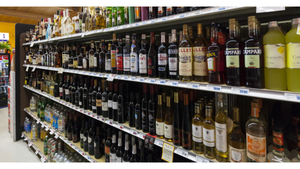Cashing in on Cards
From Millennials to Baby Boomers, greeting cards connect people, keeping the category strong.
January 1, 2018
The greeting card category may be the only scenario in which Millennial consumers will accept a low-speed connection.
Though in this day and age consumers have countless easier, faster methods of sending messages, greeting cards remain the most personal and thoughtful—making the category viable and even profitable in the internet era.
The spectrum of consumers shopping the typically impulse-buy dominated category is relatively large. Though they typically skew female, most are between ages 25-54, spanning a range of generations.
Shoppers consider many factors when mulling the card aisle looking for the perfect fit, but to the surprise of some industry observers, price is not the most important one. Officials from Kansas City, Mo.-based Hallmark say that only one-third of consumers will check the price of a card before buying it. Many credit this change to the success of high-end lines like Papyrus, which have raised the acceptable price considerably. “In fact, the premium card category is seeing the fastest growth out of any card category,” says James Melton, Hallmark’s vice president/general manager.
Phil Cowley, chief marketing officer for Design Design, based in Grand Rapids, Mich., says that in today’s dynamic retail environment, greeting cards require much more attention to physical characteristics, as opposed to simply the imagery that is printed.
This can include trendy designs and value-added embellishments like bows, foil, glitter or die-cuts, all of which are all especially attractive to consumers. The most important factor, observers add, is sentiment and verse. “Consumers want an authentic message they can envision themselves saying, even if it is something they wouldn’t have thought up on their own,” Melton adds.
Peter Doherty, executive director of the Greeting Cards Association, based in Washington, D.C., says that consumers are looking for choices, creativity, and cards that reflect either themselves or the card’s recipient. “They also want personalization—anything from the name, to the message, to custom accents and designs,” he adds. “And consumers appear to be willing to pay the higher price associated with these cards, when they find one that is uniquely theirs.”
Shoppers see their card as a differentiating factor, which also contributes to their willingness to pay the steeper prices—in some cases up to $14 per card. “When you buy a card that is handmade, it is more meaningful, and for Millennials, who have more disposable income, it is becoming very important to try and stand out amongst the fray,” says Marc Salkovitz, president of Via Bella, based in Wareham, Mass. “This is who is buying cards, instead of just saying happy birthday on Facebook, which was the way for a few years. But you got lost in the crowd. It became boring.”
Boring is not a way to describe the category. There is no shortage of innovation in the greeting cards aisle, as companies come out with new collections and designs annually, seasonally, and some even every couple of weeks.
Designer Greetings will debut three collections throughout 2016—Ooh La La, Way to Go, Kid! and Awesome Sauce. Ooh La La features hand lettering, textured backgrounds and sequins; Way to Go, Kid! is composed of uplifting messages and fun illustrations for the younger set; and Awesome Sauce is a humorous line with playful jokes and a vintage color palette.
“Designer Greetings is constantly updating product designs to reflect current market trends and our customers’ preferences,” says Elizabeth Maciorowski, marketing manager of Designer Greetings, based in Edison, NJ. “Our title selection is always increasing in order to satisfy the changing needs of the public.”
This past April, Hallmark introduced its VIDA line, a lifestyle brand for the growing base of Hispanic consumers. Products available include greeting cards, ornaments, gift presentation items and more. Cards in this line are offered in both Spanish and English.
This summer, American Greetings will introduce the P.S. Hello collection, designed to celebrate life’s big, small and in-between moments—like getting a driver’s license or a new pet. “It’s one more way American Greetings is working to make the world a more thoughtful and caring place,” says Megan Baucco, associate manager, marketing communications for the Cleveland-based company.
Soon, consumers may even be able to purchase their customized holiday cards at the grocery store. At the end of this year, Via Bella will test out a photo card program that will allow consumers to purchase a promotion code in-store, and drive them to a custom-branded site to place actual orders. At very competitive prices, says Salkovitz, the program is designed to help retailers drive traffic to their websites.
With such a wide selection available, it is not hard to find products to stock shelves—but finding the right assortment can be a challenge for grocers. Offering a product selection reflective of an individual store’s demographic is important to every grocery department, the greeting cards aisle notwithstanding. “One size does not fit all when it comes to a grocery store’s card department,” says Doherty. “Pay attention to the performance of each pocket and adjust the display based on good, in-store, sales performance and then continue to do so.”
Some officials feel that certain categories of greeting cards—namely funny cards—are underserved, in grocery stores specifically. Avanti Press, based in Detroit, fills what it calls the “humor-gap,” as the company only produces funny cards.
“General merchandise gets a lot of pressure because grocers want to expand the perimeter,” says Marc Trobman, vice president business development for Avanti Press. “The first thing that goes is something in GM, and greeting cards often get picked on, which surprises us because greeting cards is a very healthy business. It has strong productivity, not to mention a strong gross profit margin for the grocer.”
Avanti Press recently introduced its 80-pocket A* Press display, an outpost display that can be cross-merchandised in floral or wine departments. Trobman adds that one retailer even mentioned placing it in the bakery section. “Grocers should think outside the aisle, especially if the aisle is being forced to give up space,” he says.
End caps and off-shelf displays to draw attention to the category are other manufacturer suggestions for improving sales. “Retailers who invest in the category by providing the right amount of space in a visible location and taking advantage of in-store marketing capabilities are the most successful greeting card merchants,” says Baucco.
Additionally, understanding the differences between how greeting cards are shopped for, in comparison to food, is critical. “The selection and experience is an exclusively emotional relationship with one another between two people and how they make one another feel,” says Cowley. “It is very important to map the consumer in a short period of time to mitigate abandonment. This is easily accomplished with clear eye-level caption identifiers followed by on display groupings that quickly allow the breadth of the offer on display to be predictable.”
While price is not the most important factor, consumers do consider it—which is why offering quality cards at all price points remains imperative, observers say. Regardless of which priced selections reign prevalent store-to-store, this is certainly a category that grocery will want to keep performing—because it is not going away anytime soon.
“The industry’s outlook is very promising as the ability to offer sentiment will always be a part of our society,” says Maciorowski. “While technology affords an individual the capability to send a quick note, there will forever be a place for the personal, endearing touch that a greeting card offers.”
Green Greetings
The demand for sustainable production and products has started to play an increasingly more important role in the greeting cards category.
Industry observers say that the demand is coming from the retailer side, including grocers and mass merchandisers, even moreso than the consumer side. “Many retailers [Kroger, Staples, Publix] are requiring their vendors to really increase sustainability, so we are on the cutting edge of it,” says Marc Salkovitz, president of Via Bella. “It is really surprising. I think that protecting our environment is just becoming more and more important as time goes on, and I think that companies are becoming more socially responsible.”
Via Bella, based in Wareham, Mass., recently introduced its Love Mother Earth line, which is 100 percent sustainable. The products in the line are made with soy-based ink, solar-powered printing presses, 100 percent recycled paper and are individually celloed in 100 percent biodegradable cello.
Not only are greeting cards providers using more recycled products, but they are working towards the sustainability of forests as well. Officials for Cleveland-based American Greetings say the company supports efforts to increase the overall amount of certified forests and recognizes and supports all credible forestry certification standards. “We believe that any recognition of this important topic will result in the growth of socially responsible forestry management,” says Megan Baucco, associate manager, marketing communications for American Greetings.
Hallmark has been recycling paper since 1940, according to officials for the Kansas City, Mo.-based company. Paper used in many of its greeting cards that are sold in North America have 20 percent recycled fiber content. James Melton, vice president/general manager for Hallmark, adds that paper for virtually all Hallmark cards, envelopes and giftwrap comes from well-managed forests.
“Our industry enjoys a strong relationship with suppliers (paper mills, printers, finishers and converters) that share these concerns,” says Carlos LLansó, president of the Greeting Cards Association and CEO of Legacy Publishing Group. “This partnership has been instrumental in producing cost effective alternatives and innovative manufacturing processes that have improved our products, ensured sustainability and kept costs in check.”
About the Author
You May Also Like




